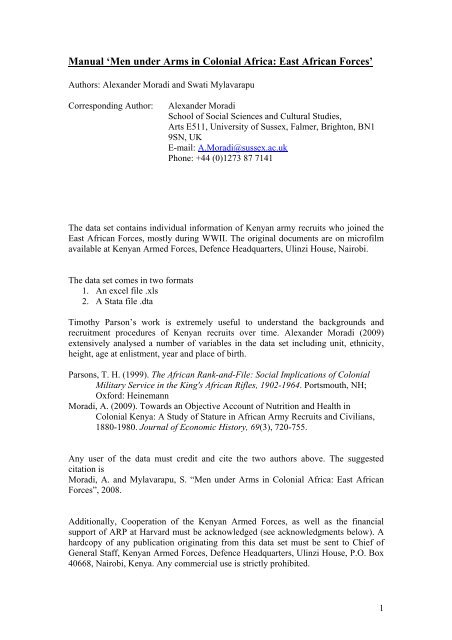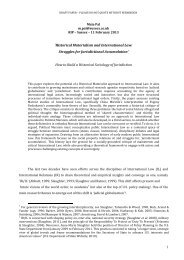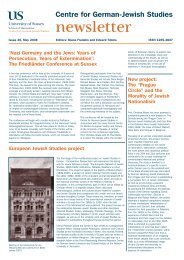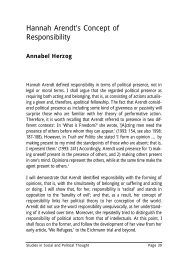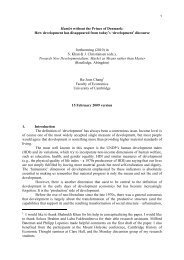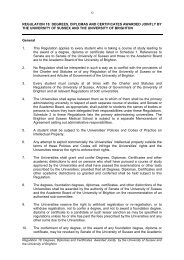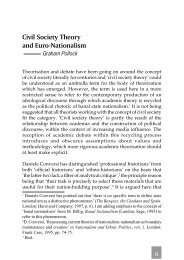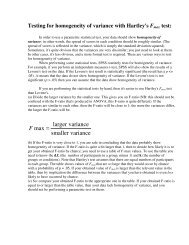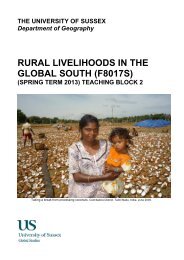Manual 'Men under Arms in Colonial Africa: East African Forces'
Manual 'Men under Arms in Colonial Africa: East African Forces'
Manual 'Men under Arms in Colonial Africa: East African Forces'
Create successful ePaper yourself
Turn your PDF publications into a flip-book with our unique Google optimized e-Paper software.
<strong>Manual</strong> ‘Men <strong>under</strong> <strong>Arms</strong> <strong>in</strong> <strong>Colonial</strong> <strong>Africa</strong>: <strong>East</strong> <strong>Africa</strong>n Forces’<br />
Authors: Alexander Moradi and Swati Mylavarapu<br />
Correspond<strong>in</strong>g Author:<br />
Alexander Moradi<br />
School of Social Sciences and Cultural Studies,<br />
Arts E511, University of Sussex, Falmer, Brighton, BN1<br />
9SN, UK<br />
E-mail: A.Moradi@sussex.ac.uk<br />
Phone: +44 (0)1273 87 7141<br />
The data set conta<strong>in</strong>s <strong>in</strong>dividual <strong>in</strong>formation of Kenyan army recruits who jo<strong>in</strong>ed the<br />
<strong>East</strong> <strong>Africa</strong>n Forces, mostly dur<strong>in</strong>g WWII. The orig<strong>in</strong>al documents are on microfilm<br />
available at Kenyan Armed Forces, Defence Headquarters, Ul<strong>in</strong>zi House, Nairobi.<br />
The data set comes <strong>in</strong> two formats<br />
1. An excel file .xls<br />
2. A Stata file .dta<br />
Timothy Parson’s work is extremely useful to <strong>under</strong>stand the backgrounds and<br />
recruitment procedures of Kenyan recruits over time. Alexander Moradi (2009)<br />
extensively analysed a number of variables <strong>in</strong> the data set <strong>in</strong>clud<strong>in</strong>g unit, ethnicity,<br />
height, age at enlistment, year and place of birth.<br />
Parsons, T. H. (1999). The <strong>Africa</strong>n Rank-and-File: Social Implications of <strong>Colonial</strong><br />
Military Service <strong>in</strong> the K<strong>in</strong>g's <strong>Africa</strong>n Rifles, 1902-1964. Portsmouth, NH;<br />
Oxford: He<strong>in</strong>emann<br />
Moradi, A. (2009). Towards an Objective Account of Nutrition and Health <strong>in</strong><br />
<strong>Colonial</strong> Kenya: A Study of Stature <strong>in</strong> <strong>Africa</strong>n Army Recruits and Civilians,<br />
1880-1980. Journal of Economic History, 69(3), 720-755.<br />
Any user of the data must credit and cite the two authors above. The suggested<br />
citation is<br />
Moradi, A. and Mylavarapu, S. “Men <strong>under</strong> <strong>Arms</strong> <strong>in</strong> <strong>Colonial</strong> <strong>Africa</strong>: <strong>East</strong> <strong>Africa</strong>n<br />
Forces”, 2008.<br />
Additionally, Cooperation of the Kenyan Armed Forces, as well as the f<strong>in</strong>ancial<br />
support of ARP at Harvard must be acknowledged (see acknowledgments below). A<br />
hardcopy of any publication orig<strong>in</strong>at<strong>in</strong>g from this data set must be sent to Chief of<br />
General Staff, Kenyan Armed Forces, Defence Headquarters, Ul<strong>in</strong>zi House, P.O. Box<br />
40668, Nairobi, Kenya. Any commercial use is strictly prohibited.<br />
1
Acknowledgements<br />
We are grateful to the Kenyan Armed Forces, Defence Headquarters, Ul<strong>in</strong>zi House,<br />
Nairobi, Chief of General Staff for grant<strong>in</strong>g access to the records of the K<strong>in</strong>g’s<br />
<strong>Africa</strong>n Rifles to the first author. We are also grateful to all those who helped to track<br />
the documents, particularly the Army Personnel Centre, Historical Disclosures,<br />
Glasgow. We thank Peterson Kithuka, Maureen Were and Jac<strong>in</strong>ta Sikali for their<br />
excellent research assistance <strong>in</strong> Nairobi. Data collection was funded by the <strong>Africa</strong>n<br />
Research Program at Harvard University, and their f<strong>in</strong>ancial support is gratefully<br />
acknowledged.<br />
2
Variable Name Description<br />
ID<br />
Case identification number<br />
ID uniquely identifies cases <strong>in</strong> the data set<br />
File No Microfilm number of the soldier’s file.<br />
File No. might be useful if check<strong>in</strong>g the orig<strong>in</strong>al data source (on<br />
microfilm)<br />
• Files 111 & 1009: These files had <strong>in</strong>formation of two<br />
soldiers.<br />
• Files 384 –428 exist, but are distorted and could not be<br />
read.<br />
• Files 429-508 are miss<strong>in</strong>g. They don’t appear <strong>in</strong> any of<br />
the film clips read<br />
• Files 1127-1131 are miss<strong>in</strong>g<br />
• There is duplication, i.e. there are two files for one<br />
soldiers numbered 1202 and 1204 (Regimental No<br />
M271). File 1204 was not <strong>in</strong>putted.<br />
• Files 1205-1221 are miss<strong>in</strong>g<br />
• Files 1900-2221 are miss<strong>in</strong>g<br />
Miss<strong>in</strong>g For some cases, the file consisted of the cover page only (see<br />
Supplementary documents). Apart from File No, Unit and<br />
Name soldier, these files do not conta<strong>in</strong> any additional<br />
<strong>in</strong>formation. Essentially, these cases can be ignored<br />
Unit_orig<strong>in</strong> Military branch as it was given on the attestation papers.<br />
Unit_orig<strong>in</strong> was standardised <strong>in</strong> Unit<br />
Unit Military branch<br />
Regimental No The regimental number as it was given on the attestation paper<br />
Name soldier The attestation papers gave the name of the soldier. Note that<br />
we decided to anonymise the entries.<br />
Code for miss<strong>in</strong>g values: 999<br />
Name father The father’s name. Aga<strong>in</strong>, we deleted the name anonymis<strong>in</strong>g<br />
the entries.<br />
Code for miss<strong>in</strong>g values: 999<br />
Chief Chief’s name<br />
Tribe The soldier’s ethnic group<br />
Code for miss<strong>in</strong>g values: 999<br />
Note that the <strong>in</strong>formation was derived from a field named<br />
‘Tribe’ <strong>in</strong> the orig<strong>in</strong>al documents. The ethnic <strong>in</strong>formation <strong>in</strong><br />
Tribe does not follow conventional classification. We therefore<br />
3
ecoded Tribe <strong>in</strong>to broader ethnic categories (see Ethnic3 for<br />
details). Ethnic3 is only available <strong>in</strong> the Stata file<br />
District Soldier’s district of birth<br />
Code for miss<strong>in</strong>g values: 999<br />
Subdistrict<br />
District is state level 2 geographic <strong>in</strong>formation. Note that<br />
District boundaries do not correspond to today’s adm<strong>in</strong>istrative<br />
regions. As the area of District is relatively large, the use of the<br />
f<strong>in</strong>er-gra<strong>in</strong>ed geographic <strong>in</strong>formation Sub-District is<br />
recommended.<br />
Soldier’s sub-district of birth<br />
Code for miss<strong>in</strong>g values: 999<br />
Subdistrict is state level 3 geographic <strong>in</strong>formation.<br />
Village Soldier’s sub-district of birth<br />
Code for miss<strong>in</strong>g values: 999<br />
Village is state level 4 geographic <strong>in</strong>formation.<br />
Muluka Soldier’s Muluka (parish)<br />
Code for miss<strong>in</strong>g values: 999<br />
DSG_District Designation Code for District<br />
Code for miss<strong>in</strong>g values: Blank<br />
We matched District with data from the GEONet geographic<br />
database (Geonet National Geospatial-Intelligence Agency,<br />
available at http://gnswww.nga.mil/geonames/GNS/<strong>in</strong>dex.jsp).<br />
The GEONet gave some background <strong>in</strong>formation of the places,<br />
which we <strong>in</strong>cluded <strong>in</strong> our data set:<br />
Code Designation def<strong>in</strong>ition Freq<br />
ADM1 first-order adm<strong>in</strong>istrative division 22<br />
ADM2 a subdivision of a first-order<br />
adm<strong>in</strong>istrative division<br />
430<br />
ADMD an adm<strong>in</strong>istrative division of a country,<br />
undifferentiated as to adm<strong>in</strong>istrative<br />
level<br />
1060<br />
AREA a tract of land without homogeneous<br />
character or boundaries<br />
2<br />
CTRF a place where more than one facility is<br />
situated<br />
2<br />
HLL a rounded elevation of limited extent<br />
ris<strong>in</strong>g above the surround<strong>in</strong>g land with<br />
local relief of less than 300m<br />
1<br />
4
PPL a city, town, village, or other<br />
agglomeration of build<strong>in</strong>gs where people<br />
live and work<br />
PPLA seat of a first-order adm<strong>in</strong>istrative<br />
division<br />
UFI_district Unique Case identifier from GEONet<br />
LAT_district Latitude of District (<strong>in</strong> decimals)<br />
Code for miss<strong>in</strong>g values: Blank<br />
LONG_district Longitude of District (<strong>in</strong> decimals)<br />
Code for miss<strong>in</strong>g values: Blank<br />
DSG_subdistrict<br />
Designation Code for Sub-District<br />
Code for miss<strong>in</strong>g values: 999<br />
Code for places which we could not identify: x<br />
Code Designation def<strong>in</strong>ition Freq<br />
999 380<br />
ADM1 first-order adm<strong>in</strong>istrative division 1<br />
ADMD an adm<strong>in</strong>istrative division of a country,<br />
undifferentiated as to adm<strong>in</strong>istrative level<br />
877<br />
ADMF a government build<strong>in</strong>g 2<br />
AREA a tract of land without homogeneous<br />
character or boundaries<br />
29<br />
CTRF a place where more than one facility is 8<br />
situated<br />
HLL a rounded elevation of limited extent ris<strong>in</strong>g<br />
above the surround<strong>in</strong>g land with local relief<br />
of less than 300m<br />
ISL a tract of land, smaller than a cont<strong>in</strong>ent,<br />
surrounded by water at high water<br />
MFG one or more build<strong>in</strong>gs where goods are<br />
manufactured, processed or fabricated<br />
MKT a place where goods are bought and sold at<br />
regular <strong>in</strong>tervals<br />
MSSN a place characterized by dwell<strong>in</strong>gs, school,<br />
church, hospital and other facilities<br />
operated by a religious group for the<br />
purpose of provid<strong>in</strong>g charitable services<br />
and to propagate religion<br />
PLN an extensive area of comparatively level to<br />
gently undulat<strong>in</strong>g land, lack<strong>in</strong>g surface<br />
irregularities, and usually adjacent to a<br />
higher area<br />
PPL a city, town, village, or other<br />
agglomeration of build<strong>in</strong>gs where people<br />
90<br />
45<br />
12<br />
4<br />
6<br />
3<br />
1<br />
20<br />
128<br />
5
UFI_subdistrict<br />
LAT_subdistrict<br />
LONG_subdistrict<br />
PPLA<br />
live and work<br />
seat of a first-order adm<strong>in</strong>istrative division<br />
(PPLC takes precedence over PPLA)<br />
1<br />
SCH build<strong>in</strong>g(s) where <strong>in</strong>struction <strong>in</strong> one or<br />
more branches of knowledge takes place<br />
63<br />
SHSE a build<strong>in</strong>g for stor<strong>in</strong>g goods, especially<br />
provisions<br />
2<br />
x 308<br />
Unique Case identifier from GEONet<br />
Latitude of sub-district (<strong>in</strong> decimals)<br />
Longitude of sub-district (<strong>in</strong> decimals)<br />
Name_village Village is a very small geographic unit, probably as small as an<br />
agglomeration of compounds<br />
DSG_village<br />
UFI_village<br />
LAT_village<br />
LONG_village<br />
geo_district<br />
geo_place<br />
geo_DSG<br />
geo_UFI<br />
geo_long<br />
geo_lat<br />
When match<strong>in</strong>g, we found a number of misspell<strong>in</strong>gs <strong>in</strong> Village,<br />
probably because the entities were so small that there were no<br />
agreed spell<strong>in</strong>gs by 1940. We therefore created variable<br />
Name_village, which gives the (officially agreed) name of the<br />
village as it appears on GEONet Names database.<br />
If you have doubts about match<strong>in</strong>g accuracy you can compare<br />
Name_village and Village<br />
Info like above for Village<br />
The geographic variables District and Subdistrict are not<br />
entirely consistent spatial aggregates. For example, some<br />
entries <strong>in</strong> District are rather state level 3 geographic<br />
<strong>in</strong>formation, and at the same time there is no entry <strong>in</strong><br />
Subdistrict. Sometimes you f<strong>in</strong>d a place <strong>in</strong> District, which is<br />
entered as Subdistrict for another soldier. Note that the<br />
<strong>in</strong>consistencies are <strong>in</strong> the orig<strong>in</strong>al entries.<br />
We therefore created the geo variables, which give preference<br />
to places (with the correspond<strong>in</strong>g latitudes and longitudes) that<br />
have designation code ADMD <strong>in</strong> Geonet. This way, the spatial<br />
aggregates become comparable<br />
!! The geo variable should be used <strong>in</strong> spatial analysis !!<br />
6
Former Trade<br />
Soldier’s occupation before jo<strong>in</strong><strong>in</strong>g the Forces.<br />
The <strong>in</strong>formation is available for soldiers who served <strong>in</strong> the<br />
Tanganyika Territory Unit (see Unit)<br />
Trade Information refers to the roles while <strong>in</strong> the army.<br />
The <strong>in</strong>formation is taken from the Trade sheet form /Report (see<br />
Supplementary documents)<br />
Name of k<strong>in</strong> Name of k<strong>in</strong> to bequeath any property. Note that we decided to<br />
anonymise the entries<br />
Code for miss<strong>in</strong>g values: 999<br />
Next of k<strong>in</strong> K<strong>in</strong>ship of Name of k<strong>in</strong>. Classifications <strong>in</strong>clude brother, sister<br />
and son<br />
Code for miss<strong>in</strong>g values: 999<br />
Served Engaged for Majesty<br />
Term_orig<strong>in</strong>al<br />
term<br />
Basically, this is a variable <strong>in</strong>dicat<strong>in</strong>g whether the recruit served<br />
with the Colours before<br />
Codes Freq<br />
999 681<br />
no 946<br />
yes 218<br />
Terms of enlistment as given on the orig<strong>in</strong>al document<br />
Terms <strong>in</strong> years recoded from Term_orig<strong>in</strong>al<br />
Code for miss<strong>in</strong>g values: 999<br />
7
Signature Soldier’s signature<br />
Code for miss<strong>in</strong>g values: 999<br />
Place_certificate Place of certificate<br />
If the soldier was illiterate, thumb-pr<strong>in</strong>ts or the three middle<br />
f<strong>in</strong>gers-pr<strong>in</strong>t was taken.<br />
Height (feet) Height <strong>in</strong> feet<br />
Code for miss<strong>in</strong>g values: 999<br />
Height (<strong>in</strong>ches) Height <strong>in</strong> <strong>in</strong>ches<br />
Code for miss<strong>in</strong>g values: 999<br />
Chest Chest Circumference (<strong>in</strong> <strong>in</strong>ches)<br />
Code for miss<strong>in</strong>g values: 999<br />
Rank<br />
Day_enlist Day of enlistment<br />
Month_enlist Month of enlistment<br />
Year_enlist Year of enlistment<br />
Day_doc<br />
Soldier’s Rank<br />
The ranks are given as abbreviations common <strong>in</strong> the British<br />
army at that time<br />
CPL Corporal<br />
PTE Private<br />
SPR Sapper<br />
SGT Sergeant<br />
CSM Company Sergeant Major<br />
DVR Driver<br />
GNR Gunner<br />
RSM Regimental Sergeant Major<br />
SGMN Signalman<br />
WOII Warrant Officer Class II<br />
WOPC Warrant Officer Platoon Commander<br />
BSM Battery Sergeant Major<br />
CLK Clerk<br />
Day when the document was issued<br />
Month_doc Month when the document was issued<br />
Year_doc<br />
Age<br />
Year when the document was issued<br />
Recruit’s age<br />
Code for miss<strong>in</strong>g values: 999<br />
8
On some medical forms, age is recorded as “A” or “Adult”. So<br />
if you come across it - that is the way it is recorded. In addition,<br />
<strong>in</strong>formation on age is lack<strong>in</strong>g for some soldiers. This cuts<br />
across all units but it is common for soldiers <strong>in</strong> EAMLS, served<br />
for a term of six months and were pagans.<br />
Yob Calculated year of birth<br />
Age_enlist<br />
The year of birth was calculated by subtract<strong>in</strong>g Age from<br />
Year_doc. There were a number of <strong>in</strong>consistencies, e.g.<br />
soldiers were not five years older on a document issued 5 years<br />
later. In these cases we took the average<br />
Calculated age at enlistment<br />
Source (Age) Which document <strong>in</strong>dicated the Age<br />
K<strong>in</strong>d of document<br />
Supplementary<br />
documents<br />
The source, from which the entries on Age is based<br />
Additional documents that are available on microfilm and from<br />
which some of the variables are based (see File No)<br />
Religion_orig<strong>in</strong> Soldier’s religion as it appears on the documents.<br />
Because of the many missionaries <strong>in</strong> Kenya, the Christian<br />
religion was given <strong>in</strong> detail. You can f<strong>in</strong>d here reported<br />
religions like AIM, SDA, Quaker and Orthodox. We therefore<br />
recoded Religion_orig<strong>in</strong> <strong>in</strong>to broader categories of religion<br />
(see Religion3 at the end of this manual for details). Religion3<br />
is only available <strong>in</strong> the Stata file<br />
Marks Special marks<br />
Code for miss<strong>in</strong>g values: 999<br />
Medical <strong>in</strong>fo Other <strong>in</strong>formation found on medical forms<br />
Deployment Countries served dur<strong>in</strong>g the war<br />
Note that soldiers fought <strong>in</strong> a number of countries, which are all<br />
listed <strong>in</strong> this variable. Countries are separated by a comma<br />
Ethnic3<br />
Standardized ethnicity<br />
Use crosstabs to f<strong>in</strong>d out about which ethnicities <strong>in</strong> Tribe were<br />
summarized<br />
Ethnicity Freq<br />
Gusii 34<br />
Kalenj<strong>in</strong> 81<br />
Kamba 198<br />
Kikuyu 140<br />
Luhya 129<br />
9
Luo 505<br />
Meru 357<br />
Northern pastoralists 83<br />
Other 264<br />
Somali 54<br />
Religion3 Standardized Religion<br />
Codes Freq<br />
999 452<br />
Muslim 86<br />
NIL 55<br />
Pagan 547<br />
Protestant/other christian 431<br />
Roman Catholic 274<br />
ADDITIONAL DATA ENTRY NOTES<br />
• Attestation forms for EAMLS lack <strong>in</strong>formation on height, chest measurement<br />
and marks<br />
• Note that the attestation papers for the Tanganyika Territory do not have<br />
<strong>in</strong>formation on sub-district, height and chest measurement, religion and marks<br />
10


